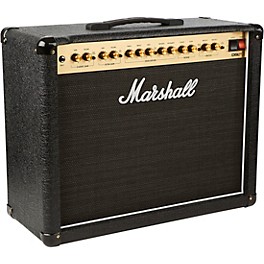Guitar Amplifiers
Best Match
11,130 matches found
Top-Seller
New Arrival
Save 10%
Top-Seller
$46.65/mo.‡ with 48-month financing*
Learn More
Save 10%
New Arrival
Save 10%
On Sale
Top-Seller
$24.98/mo.‡ with 48-month financing*
Learn More
Save 10% In Cart
Save 10%
$62.50/mo.‡ with 48-month financing*
Learn More
Top-Seller
Top-Seller
On Sale
Restock:$254.99
Top-Seller
Save 10%
Top-Seller
OpenBox:$351.99
Fender Limited-Edition '65 Princeton Reverb 12W 1x12 Celestion G12-65 Tube Guitar Combo Amp
(30)
$1,599.99
Save 10%
$33.34/mo.‡ with 48-month financing*
Learn More
On Sale
Restock:$339.99
Top-Seller
OpenBox:$263.12
Top-Seller
Top-Seller
$24.98/mo.‡ with 48-month financing*
Learn More
Top-Seller
For easy, go-anywhere amplification, start out with a combo guitar amp. These all-in-one units combine the preamp, power amp and speakers into one piece, which makes them ideal for places where you want to set up and tear down in a hurry. Rehearsals and busking are easier with a combo amplifier, and they're great for small venues that don't need the power of a larger amp. The combo is your basic, high-versatility amp, and no guitarist should be without one.
Amplifier heads are the standalone electronic components of an amp stack. A head unit is designed to be used with external speakers, and is usually much more powerful than the head section built into a combo amp. There are two main sections to the head unit: the preamp and the power amp. These circuits are one of the most important considerations when choosing your combo amp or head, because this is where tubes come into play. Check out the latest Fender Bassbreaker Amplifiers. They offer modern appointments while maintaining the vintage Fender sound.
If you're after a warmer, richer sound with greater distortion and a vintage feel, consider a tube-based amplifier. On the other hand, a solid-state amplifier may be the choice for you if you're looking for more of a clear, crisp sound and the best possible reliability. It all comes down to your own preference.
Speakers and speaker stacks are a necessary partner for standalone amplifier heads. Take the total power level into account when you're looking at speakers, ensuring you're getting a stack with the muscle you need for the venues you play. Speaker configuration is also important, with larger woofers delivering more powerful bass and smaller tweeters bringing through the high-end.
For any venue, it's important to bring along the right amp. A huge amp in a tiny club is not only overkill; it's also extra setup work that you can avoid altogether with a smaller combo amp. On the flipside, a little amp in a big theatre could mean that some of the audience won't even hear you. Take your time deciding what the best option is for you.

